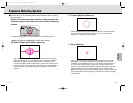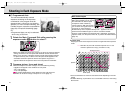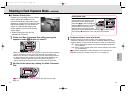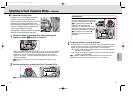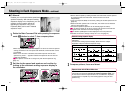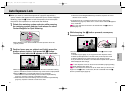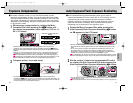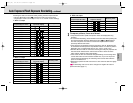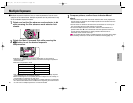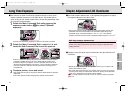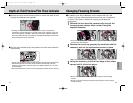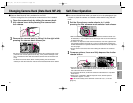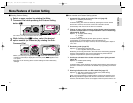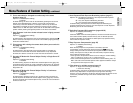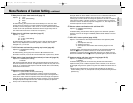
6160
Multiple Exposure
Exposure
2
Rotate the Main-Command Dial while pressing the
˚ button to set the desired exposure
compensation.
•Exposure compensation is necessary depending on the number of
exposures in multiple exposure since more than one image is exposed in
the same frame.
•Standard compensation value:
Number of exposures Compensation value
Two –1.0 EV
Three –1.5 EV
Four –2.0 EV
Eight or Nine –3.0 EV
•Test shooting is recommended since the compensation actually required
varies depending on the shooting situation.
•When the background is completely dark and subjects do not overlap, no
compensation is necessary for each shot.
•In some cases, frames may shift slightly in multiple exposure. In particular,
film advance/rewind becomes unstable at the beginning and near the end
of a film roll so multiple exposure is not recommended.
•Multiple exposure consists of two or more exposures of one or more
subjects in the same frame. Multiple exposure can be performed in any
of the available exposure modes.
1
Rotate and set the film advance mode selector to Z
while pressing the film advance mode selector lock
release.
3
Compose picture, confirm focus indicator / and
shoot.
•The first shot is taken when the shutter release button is fully depressed.
The film does not advance and multiple exposures can be taken from the
second shutter release.
•The film does not advance and the frame counter does not count up as
long as the film advance mode selector is set to Z.
•To cancel multiple exposure, set the film advance mode selector to a
position other than Z. Film is advanced when the exposure meter is on
and the shutter release button is lightly pressed. When the film is
advanced, frame counter counts up.
· 14: The film advance mode in multiple exposure is normally set to single-
frame shooting. However, it can be set to continuous shooting (page 73).
P500 (E) 02.12.27 5:48 PM Page 60



